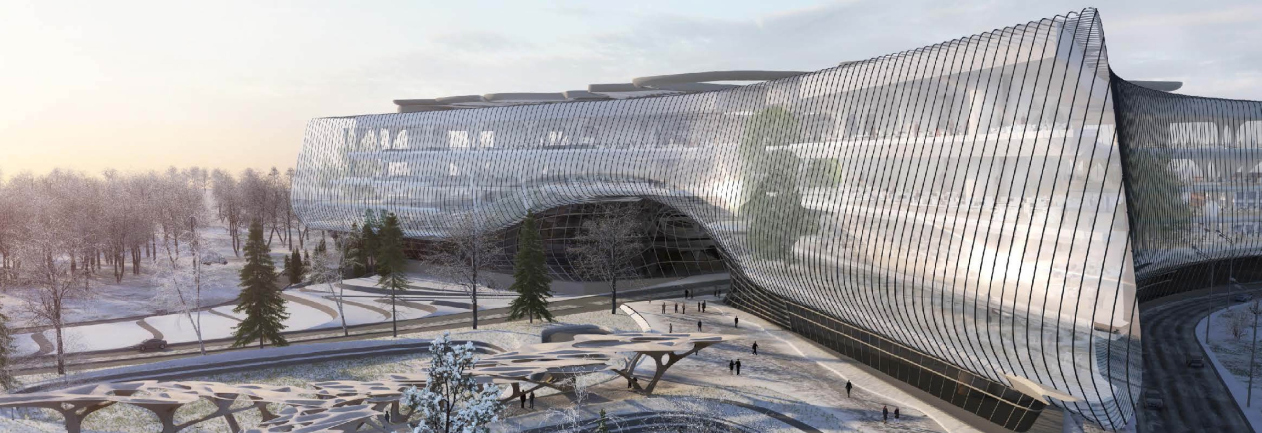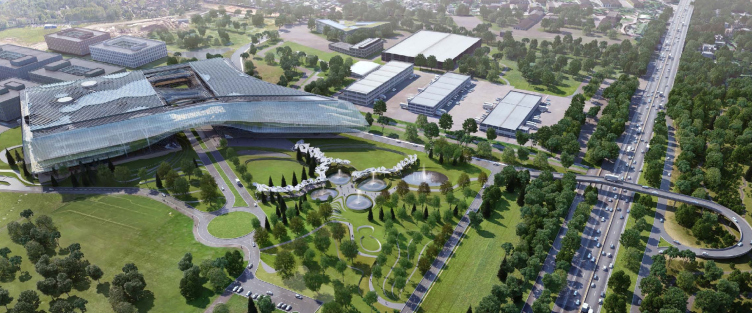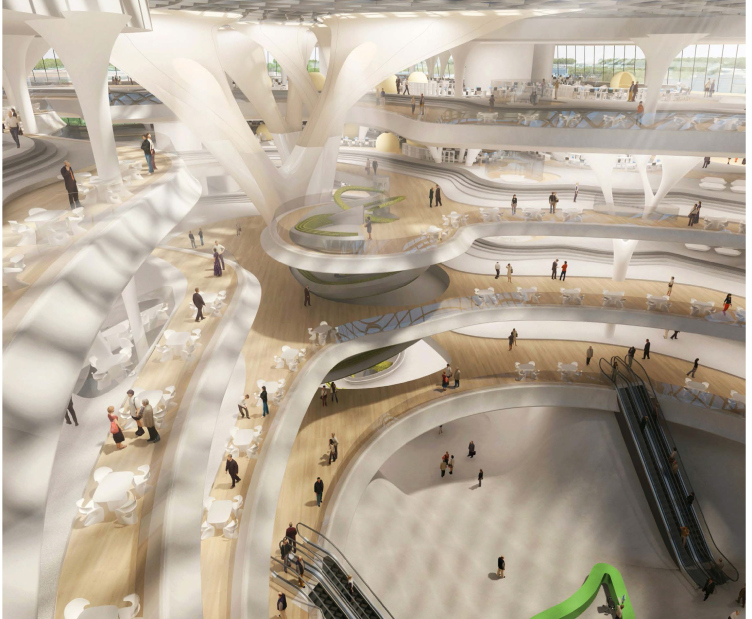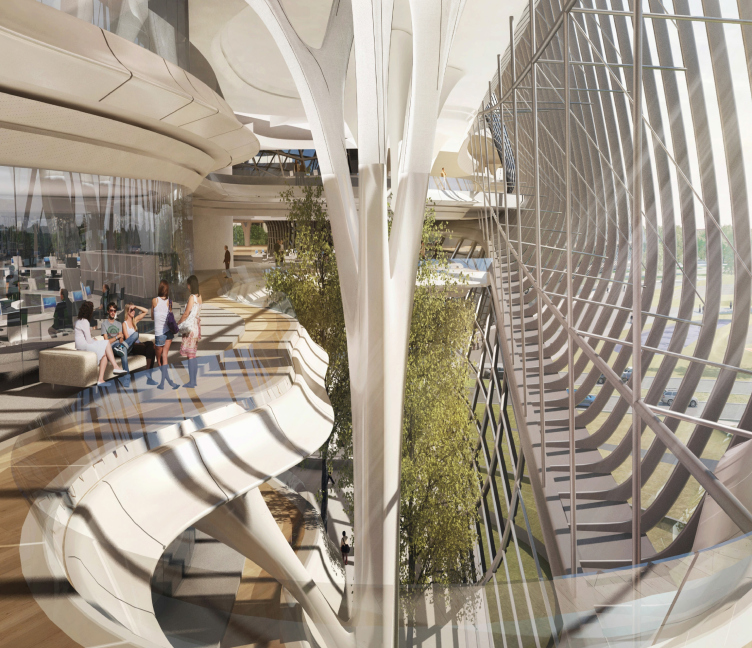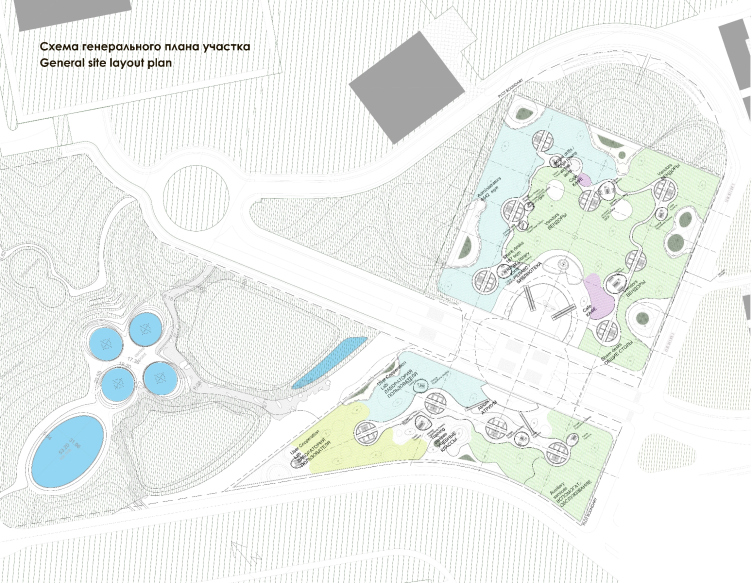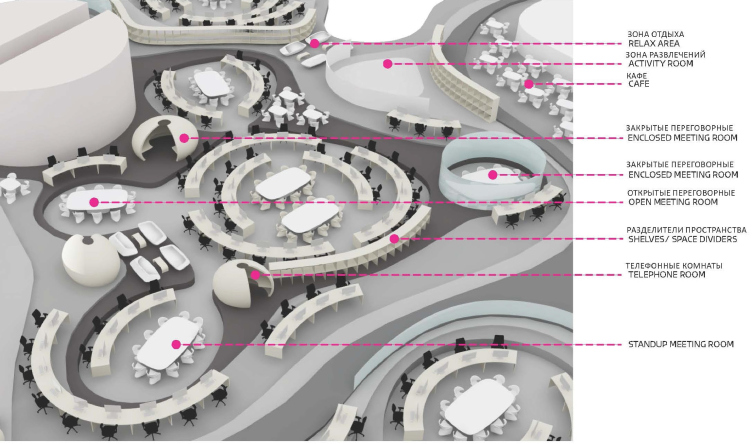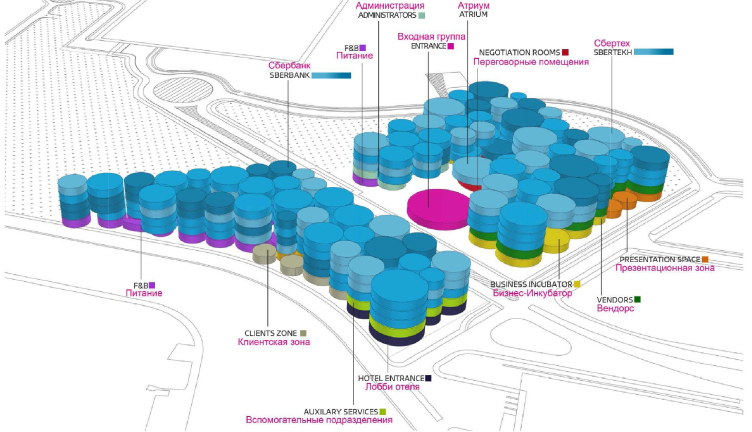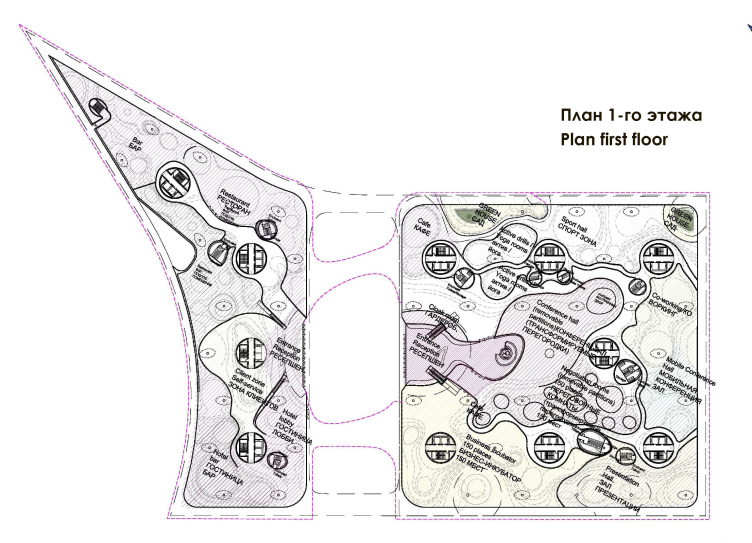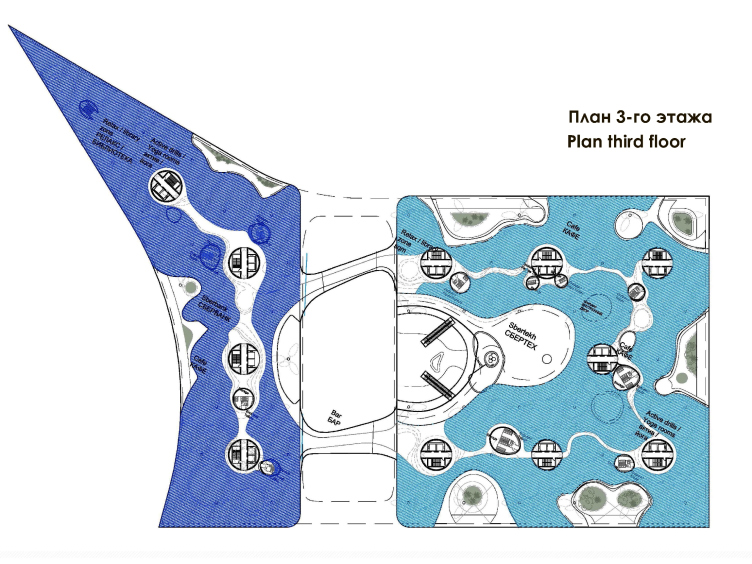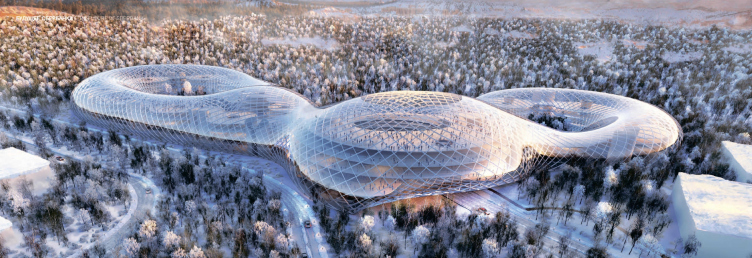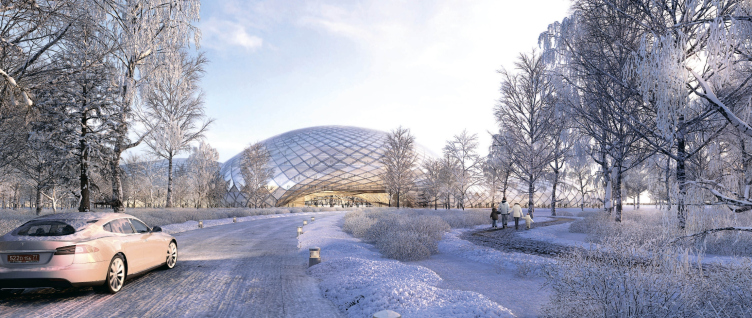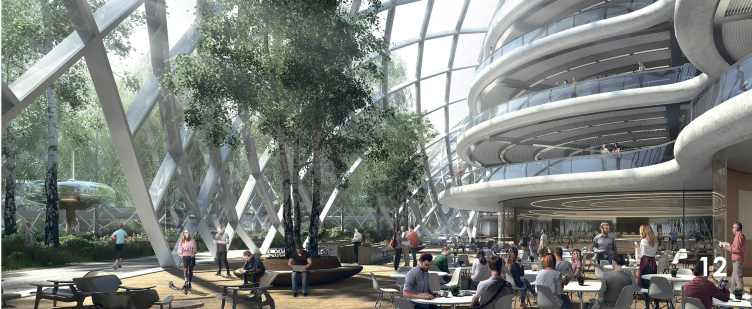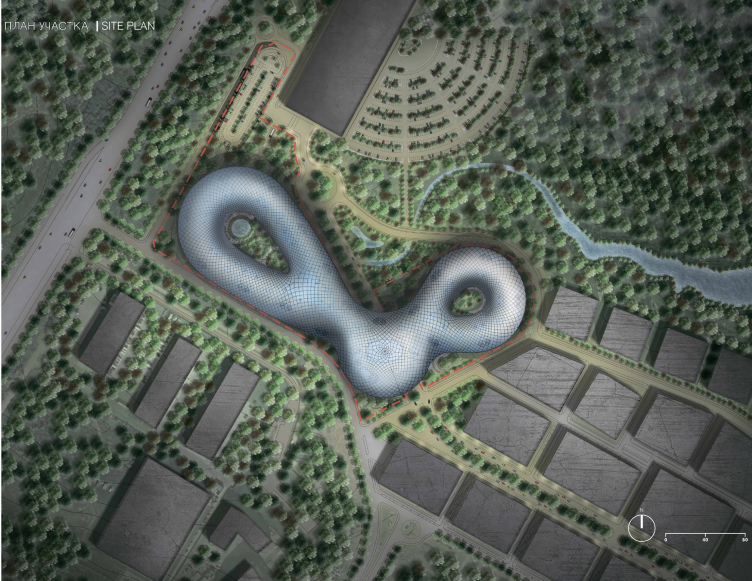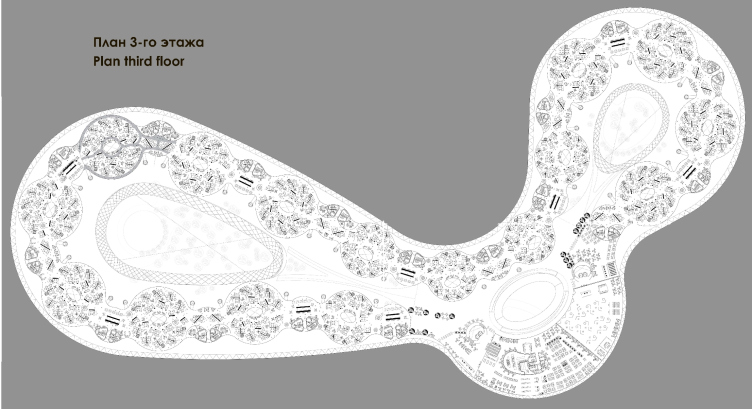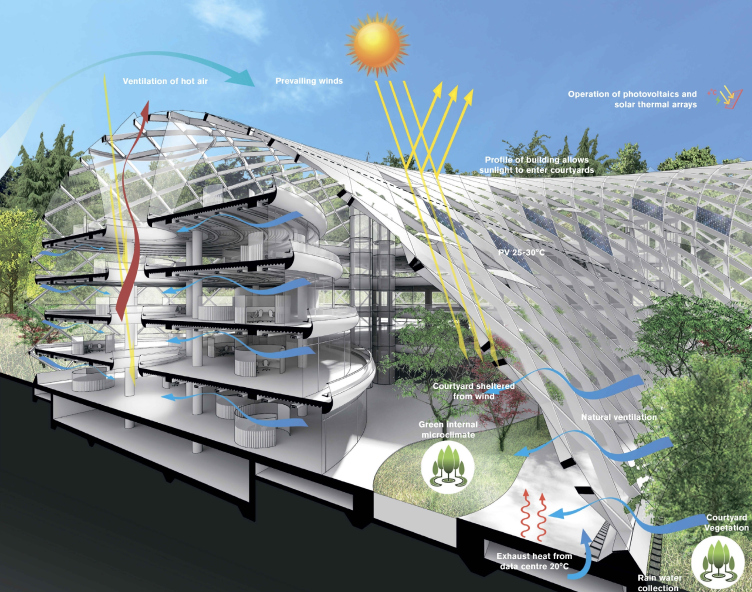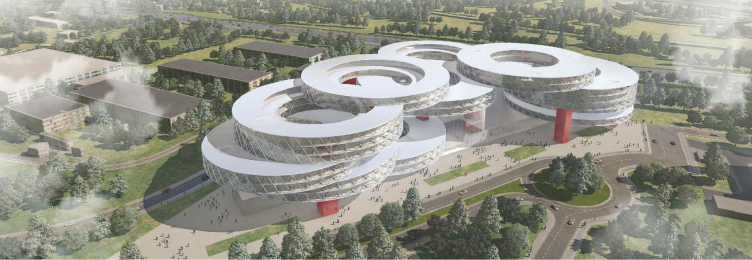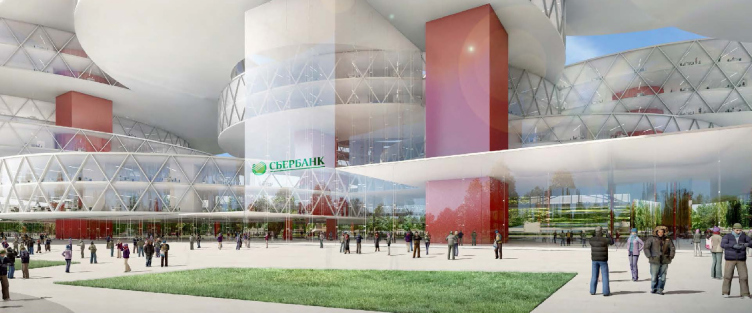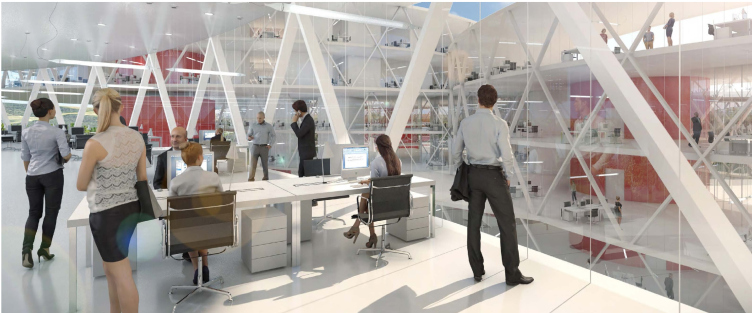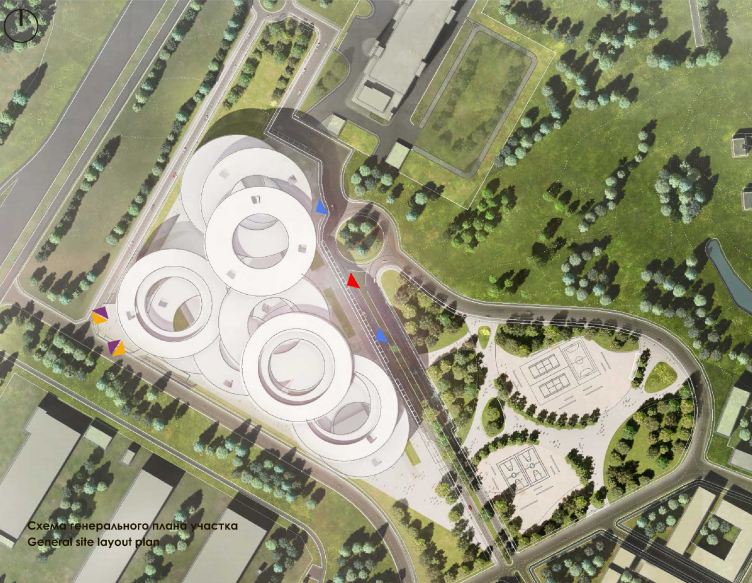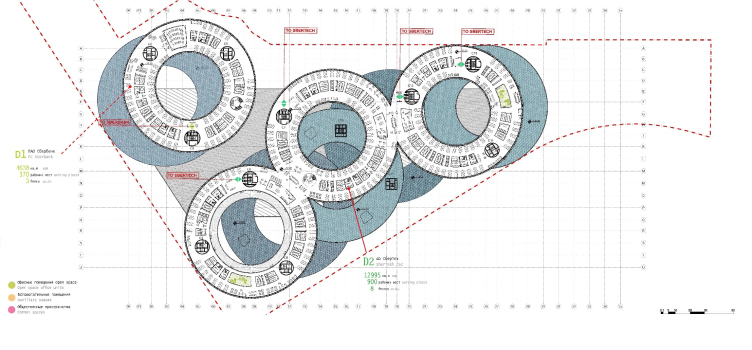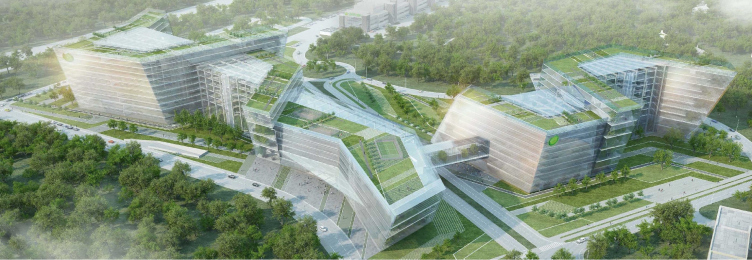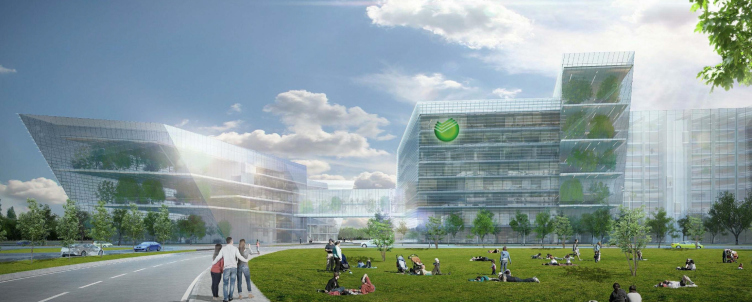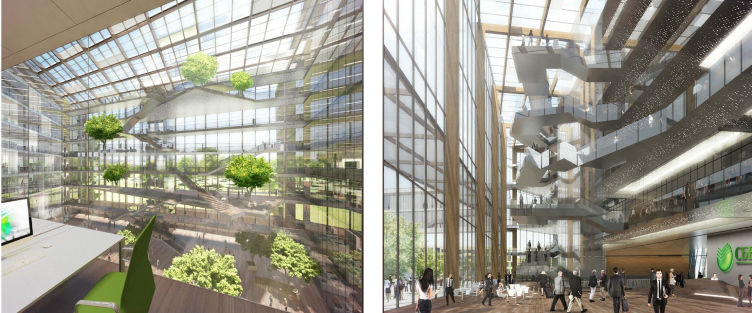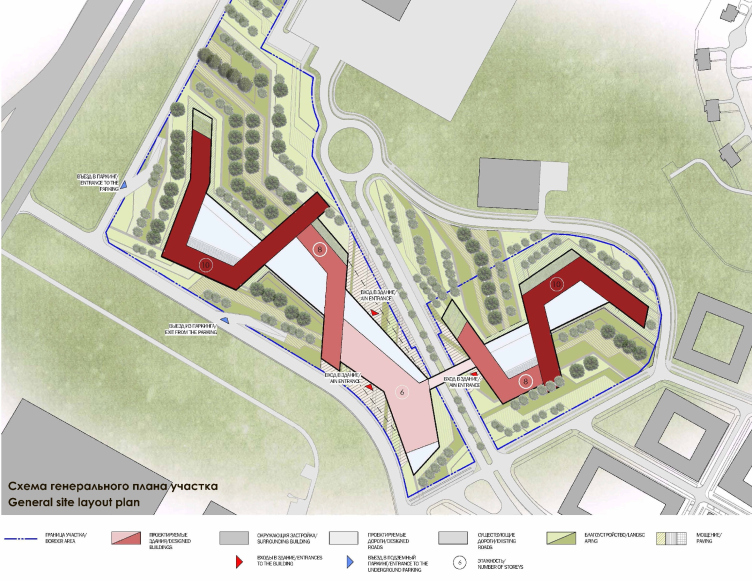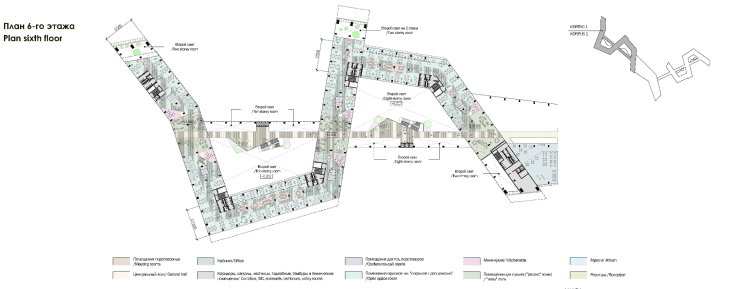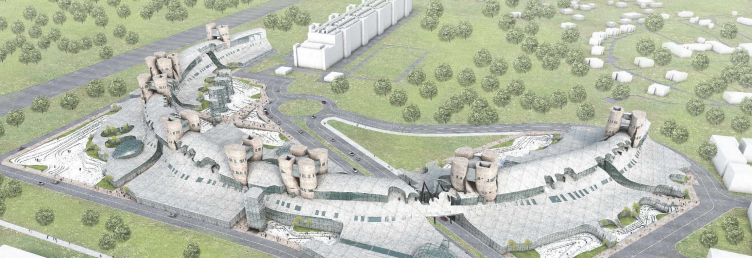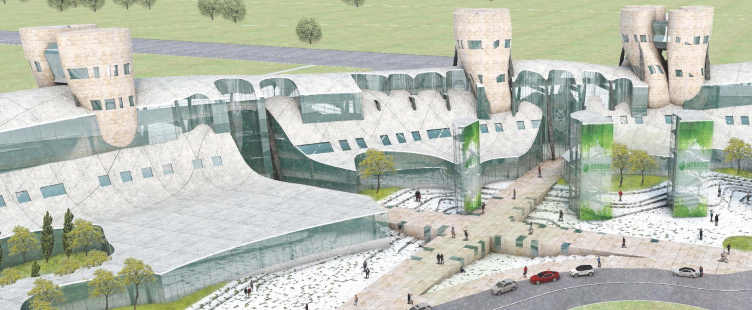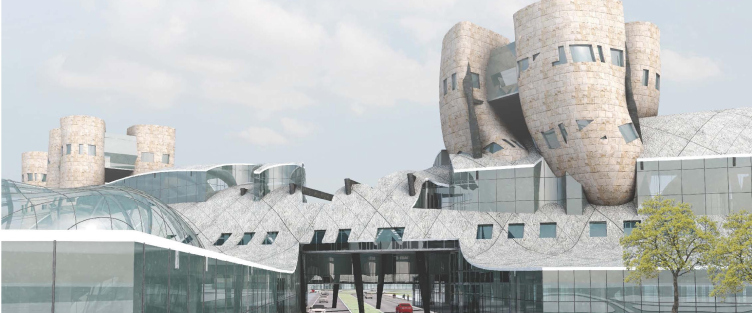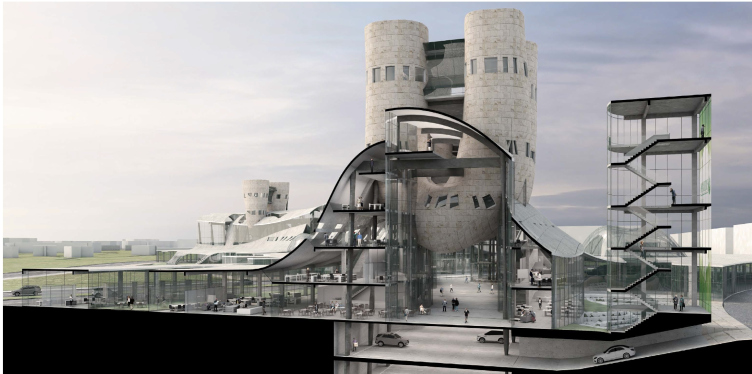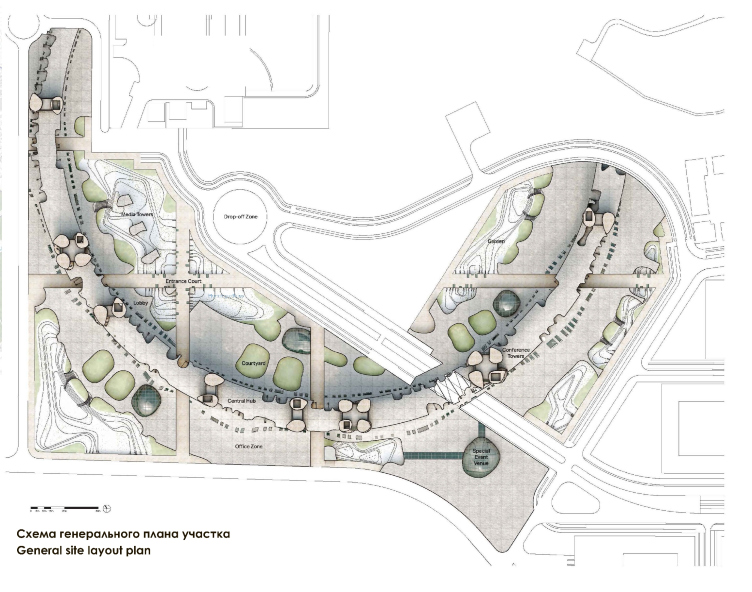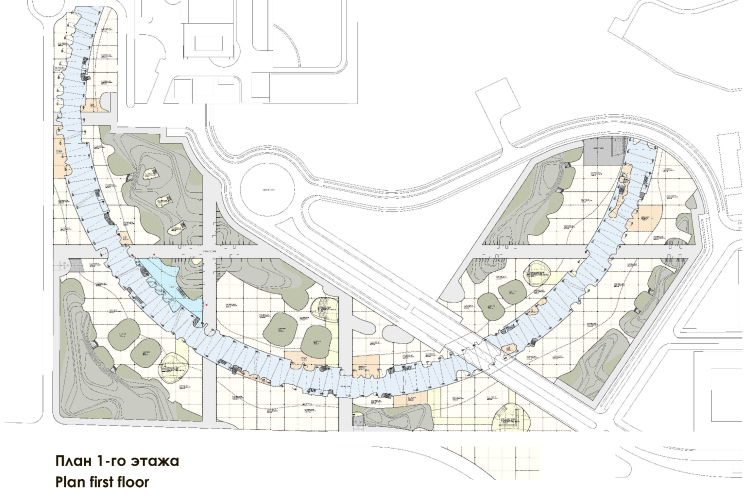The results of the closed international competition were announced in the Sberbank HQ immediately after the judging panel came up with their decision. Choosing the best of the five submitted proposals that over the last three months were developed by the world's top architectural companies from Great Britain, Russia, USA, and Italy was a tough call - it took the judging panel almost a whole day to arrive at a decision. At the end of the day, the project by Zaha Hadid Architects, the last project that the now-late Zaha ever worked upon, got the first place in the rating, slightly outweighing the others.
According to the President and the C.E.O of Sberbank, German Gref, who personally announced the winner, the judging panel had to choose from the "great architects and great projects". Besides the standard evaluation criteria, such as technical parameters, implementability, and the future contents of the building, the judging panel also considered the opinion of the future employees of the new Technopark: there are more than ten thousands of them, and they evaluated the proposed projects and voted for them online for weeks. As for German Gref himself, he admitted that he had been "mentally" inclined toward the project submitted by Norman Foster - the architect with whom the leaders of Sberbank have already worked on the building of a five-star hotel in the city of Yalta. Ultimately, however, most of the to-be employees opted for the concept developed by Zaha Hadid - which to a large extent determined the outcome of the competition. The future users liked the wide sunlit spaces convenient for organizing coworking sessions and large events.
"To us, this is not just a building - German Gref explained - this is the place where the future of Russia's largest international bank will be created. We wanted to highlight with this building the necessity of constant improvement and our commitment to excellence. The new Technopark must form an environment that constantly pushes one forward, always raising the bar still higher".
The chairman of the judging panel, Sergey Kuznetsov, in turn, stressed that the contest for the best Technopark project became "the most noticeable and important event of this year, in the result of which Moscow will get a top-class building". Sergey Kuznetsov also went on to say that the top officials of the bank announced their intentions to organize this competition still back in 2014 after which the customer, together with Moscow City Architecture Committee selected the top five participants. "We invited world-class masters whose outlooks on modern architecture were known in advance to be vastly different, so as they could encompass all the possible options in search for the best solution - Sergey Kuznetsov added - And we truly achieved this goal. The judging panel was absolutely amazed by the works that were submitted. This was a real feast of taste and professionalism, and I can say that about each and every participant of the contest".
Below, we are featuring the winning project, as well as the projects submitted by the other contestants:
Zaha Hadid Architects / winner
The building of the Technopark is situated along the south border of the land site and it traces its smoothly flowing outline. A large glass volume is pierced by a tunnel of a broad atrium/promenade that makes it look like an airport terminal. The two-part "central hub" functions as the connecting module that serves as a communication, exhibition, and event-hall unit, all rolled into one.
The architecture here is glass-glowing but laconic as well. At the same time, it is based on the most advanced technologies, including the heat and power-efficient ones. Inside, there is a sci-fi interior with giant columns looking like trees or maybe even sinews or tendons. The author also thought out the vertical and horizontal permeability and connection between all the functional zones. Special attention has been given to the premises' mobility and ability to transform. In addition to the open plans of the working areas, the author provided for an array of cozy private spaces: recreation areas, meeting halls, and telephone rooms.
Sberbank's Technopark in Skolkovo © Zaha Hadid Architects
Sberbank's Technopark in Skolkovo © Zaha Hadid Architects
Sberbank's Technopark in Skolkovo © Zaha Hadid Architects
Sberbank's Technopark in Skolkovo © Zaha Hadid Architects
Sberbank's Technopark in Skolkovo © Zaha Hadid Architects
Sberbank's Technopark in Skolkovo © Zaha Hadid Architects
Sberbank's Technopark in Skolkovo. Functional model © Zaha Hadid Architects
Sberbank's Technopark in Skolkovo. Plan of the first floor © Zaha Hadid Architects
Sberbank's Technopark in Skolkovo. Plan of the third floor © Zaha Hadid Architects
***
Foster + Partners
In the project by Norman Foster, the Technopark is divided into three functional units: "SberTech", "Sberbank", and "Central Hub". They are united by a courtyard and covered with a dome from a monolithic translucent material that looks like glass bubbles stretched on top of the agile contour of the building's plan. The dome is pierced with sun tubes that let inside the ambient light, and also, thanks to the innovative engineering systems, maintain and fine-tune the microclimate inside the Technopark.
The office part of the Technopark provides for flexible reconfiguration of the office spaces, as well as using modular elements. The densely packed workspaces rhythmically alternate with recreation zones forming some semblance of a chain that binds the building along its perimeter and opens up views of promenades and little green yards on the inside.
Sberbank's Technopark in Skolkovo © Foster + Partners
Sberbank's Technopark in Skolkovo © Foster + Partners
Sberbank's Technopark in Skolkovo © Foster + Partners
Sberbank's Technopark in Skolkovo © Foster + Partners
Sberbank's Technopark in Skolkovo © Foster + Partners
Sberbank's Technopark in Skolkovo © Foster + Partners
***
Massimiliano Fuksas architetto
The building supports the main planning axis of the boulevard by inscribing itself into the existing structure of Skolkovo's master plan and taking on the role of the centerpiece. The concept is based on simple juxtaposition of ringlet-like elements that overlap between one another, sometimes with a dramatic off-axis shift. The use of interactive LED façades goes a long way to embellish the project concept.
In the Fuksas project, the heart of the new Technopark is the "Central Hub" that includes the representative, R&D, and educational functions. The hub occupies the entire ground floor of the building functioning as the crossing point and a venue for exhibitions and conferences. Each of Sberbank subdivisions occupies several "ringlet" volumes comprising from one to three floors. In the offices, the workplaces and the infrastructure objects alternate with recreation spaces, as well as with winter gardens lightened up by special lights.
Sberbank's Technopark in Skolkovo © Fuksas
Sberbank's Technopark in Skolkovo © Fuksas
Sberbank's Technopark in Skolkovo © Fuksas
Sberbank's Technopark in Skolkovo © Fuksas
Sberbank's Technopark in Skolkovo © Fuksas
***
SPEECH
In the SPEECH project, the complex consists of three buildings connected with covered galleries or overpasses. On the plan, the two lateral buildings have a form of trapeze-shaped "horseshoes", while the middle one is in fact a zigzag. The central nucleus of the building contains a multifunctional communication hub that connects the individual office units. The inside space is enriched by lots of zones for recreation and communication, with open-air double-height public spaces. On the usable roof, the authors placed sports and recreation venues.
The possibilities of flexible reconfiguration of the office spaces coupled with the modularity of the building blocks make them really convenient to work with. The office layouts comprise several functional modules each, and can be transformed in accordance with the needs of the current projects.
Sberbank's Technopark in Skolkovo © SPEECH
Sberbank's Technopark in Skolkovo © SPEECH
Sberbank's Technopark in Skolkovo © SPEECH
Sberbank's Technopark in Skolkovo © SPEECH
Sberbank's Technopark in Skolkovo © SPEECH
***
Eric Owen Moss Architects
The volume is spread over the territory in the shape of a gigantic semi-ring that sprouts interconnected blocks of slanting deformed stone towers. The multilayered structural glazing of the separately standing media towers is meant to demonstrate the latest achievements and developments of the Technopark. The panoramic glazing along the perimeter provides natural insolation of the workplaces. The semi-ring contains the "Central Hub". Along it, like they would be along a promenade, the office modules are organized and distributed. The workplaces alternate with conference halls, premises for public events and key presentations, with rest zones. The top floors are occupied by meeting rooms and recreation areas.
Sberbank's Technopark in Skolkovo © Eric Owen Moss Architects
Sberbank's Technopark in Skolkovo © Eric Owen Moss Architects
Sberbank's Technopark in Skolkovo © Eric Owen Moss Architects
Sberbank's Technopark in Skolkovo © Eric Owen Moss Architects
Sberbank's Technopark in Skolkovo © Eric Owen Moss Architects
Sberbank's Technopark in Skolkovo © Eric Owen Moss Architects
***

